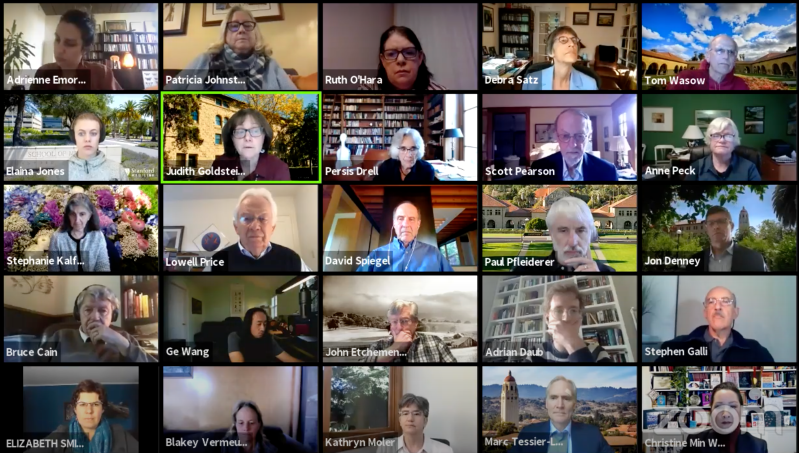University President Marc Tessier-Lavigne and Vice President for Development Jon Denney updated the Faculty Senate on fundraising efforts to support the Long-Range Vision at their meeting on Thursday. Describing the challenges presented by the current landscape, including economic uncertainty and declining public opinion of higher education, Denney outlined a “Uniquely Stanford” fundraising approach that includes an adaptive timeline and no public dollar goal.
The Long-Range Vision, launched in May 2019, revolves around three themes — advancing knowledge for humanity, accelerating solutions for the world and educating students for a life of purpose — according to Tessier-Lavigne. He added that the Inclusion, Diversity, Equity and Access (IDEAL) initiative is woven throughout the framework.
Tessier-Lavigne said that while Stanford’s previous comprehensive fundraising campaign, which began in 2006, skewed toward initiative priorities like several large building projects, more than half of fundraising for the current campaign is focused on core school priorities, including faculty needs and graduate fellowships.
Speaking on the specifics of the fundraising strategy, Denney drew distinctions between the current landscape and the environment surrounding the launch of the previous campaign almost 15 years ago. Economic uncertainty, declining public opinion of higher education, the global pandemic, social unrest and an asynchronous launch of initiatives all necessitate a new “Uniquely Stanford” approach to this campaign, according to Denney.
A “Uniquely Stanford” approach will “move away from public dollar goals, and instead seek to focus on the impact that individual initiatives hope to achieve,” Denney said. “We are determined not to have the complete measure of our success to be solely defined by the dollars raised.”
More adaptive timelines will also be implemented with the understanding that some parts of the Long-Range Vision, such as increased support for financial aid, are already well-defined, while others, such as the sustainability initiative, are still in development. Denny said that well-defined campaign initiatives will launch into a “public phase” almost immediately, which will involve broad fundraising efforts. Others may need a more prolonged “quiet phase,” where lead gifts are solicited from only a small group of donors.
The final two pillars of a “Uniquely Stanford” approach are a unified messaging strategy and a parallel awareness campaign, with the goal of establishing Stanford as a purposeful university.
Both Denney and Tessier-Lavigne said they believed it was important to build awareness around Stanford’s contributions to the public good, now and in the future.
“It’s no secret that the reputations of universities including Stanford have been challenged by perceptions of elitism and insularity, and that scrutiny has only increased as education is going online,” Tessier-Lavigne said. “But like it or not, we must work to earn both the public trust and the trust of Stanford supporters if we wish to enjoy their continued support.”
Contact Evan Cheng at evcheng ‘at’ stanford.edu.
